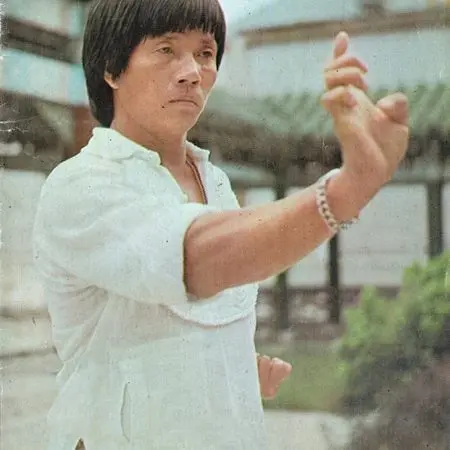Why Lau Kar Leung Movies Should Be on Every Kung Fu Enthusiast’s List
Lau Kar Leung is a name that resonates deeply within the world of Kung Fu cinema. His films not only showcase the artistry of martial arts but also embody timeless themes of honor, tradition, and perseverance. For any Kung Fu enthusiast, exploring Lau Kar Leung’s works is akin to understanding the very soul of the genre. In this blog, we’ll uncover why his movies deserve a spot on your watchlist and how they have shaped the landscape of martial arts films.
The Master Behind the Camera: An Introduction to Lau Kar Leung
Lau Kar Leung, a name synonymous with excellence in Kung Fu cinema, was more than just a director; he was a storyteller who weaved intricate narratives exploring the depth of martial arts. Born into a family steeped in tradition, Lau inherited a rich legacy that would shape his passion for martial arts from a very young age. He began training in martial arts at just a handful of years old. Those formative years laid the foundation for a career that would redefine how martial arts could be portrayed on screen.
His unique vision and relentless dedication to authenticity made him a pioneer in the Kung Fu genre. Not only did Lau direct numerous films, but he also choreographed breathtaking fight scenes that became iconic in their own right. By the time he was fully immersed in the film industry, his reputation was cemented as both a brilliant director and a master of martial arts movements. What’s striking is how he managed to infuse cultural values into his movies, allowing the audience to resonate with the characters on a personal level.
It’s fascinating to consider how Lau’s life experiences shaped his filmmaking approach. The trials, tribulations, and triumphs he faced as an artist offered a lens through which he could express profound themes of honor, discipline, and respect in his films. His ability to combine these elements with stunning martial arts choreography sets him apart from his contemporaries and makes his works a must-see for any Kung Fu enthusiast.
Iconic Films That Define His Legacy
When discussing Lau Kar Leung movies, one cannot overlook his masterpiece, ‘The 36th Chamber of Shaolin.’ This film is often seen as a quintessential piece in Kung Fu cinema. It tells the story of a young man who endeavors to learn martial arts to combat oppression. The innovative storytelling and revolutionary fight choreography not only captivated audiences but also set a new standard for future films in the genre. The film remains a clear display of how martial arts can convey deeper messages while also entertaining.
Another film, ‘Dirty Ho,’ showcases Lau’s ability to blend humor and action seamlessly. It explores the dynamic between a nobleman and a master thief. The camaraderie and adventures experienced by these characters under Lau’s direction create a cinematic experience that is both engaging and delightful. The choreography in this film is refreshing and highlights Lau’s flair for creativity, something that has influenced countless filmmakers since.
Equally compelling is ‘Eight Diagram Pole Fighter,’ where Lau’s narrative weaves a tale of familial loyalty and revenge, enhanced by absolutely stunning fight sequences. It highlights not just the physical prowess of the actors but also their emotional depth. Lau managed to capture the essence of personal struggle, making the fight scenes more than mere displays of skill; they became pivotal moments of character development. It’s films like these that illuminate why Lau Kar Leung should be celebrated and remembered in the annals of martial arts cinema.
Innovative Choreography: The Art of Kung Fu in His Films
One of the hallmarks of Lau Kar Leung movies is the breathtaking choreography that accompanies each fight scene. Unlike many of his peers, Lau placed a significant emphasis on understanding the martial arts techniques he showcased on-screen. This understanding allowed him to create fights that felt authentic and engaging, pulling viewers into the world he crafted. The fluidity and precision in his choreography are not merely for spectacle; they tell a story of their own, reflecting the emotional stakes of the characters.
Take, for instance, the intricate movements in ‘The 36th Chamber of Shaolin,’ where each fight montage is meticulously crafted to represent the protagonist’s journey. The training sequences are not just demonstrations of skill but symbolize growth, resilience, and the spirit of perseverance, all central themes in Lau’s films. His talent lies in marrying technical excellence with heartfelt storytelling, a masterclass in how action should be approached in cinema.
Moreover, Lau’s ability to innovate was further revealed in his use of the camera during fight scenes. By exploring different angles and employing slow-motion techniques, he offered a fresh visual perspective on martial arts battles. This was groundbreaking for his time. Utilizing these techniques, Lau made audiences feel the intensity of each punch, kick, and counter, making them experience the fights viscerally. He understood that every movement mattered and worked tirelessly to elevate the art of Kung Fu film choreography, setting the bar for future generations of filmmakers.
Stories of Honor and Tradition: Themes in Lau Kar Leung Movies
At the heart of every Lau Kar Leung film lies a profound respect for tradition and honor. His narratives often explore the struggles faced by individuals caught between societal expectations and personal beliefs. For instance, a recurring theme is the dedication to the martial arts philosophy of ‘Wu De’ or martial virtue. In films like ‘The 36th Chamber of Shaolin,’ viewers witness characters who embody these virtues, and their narratives reflect a journey toward understanding one’s place in the world.
Lau cleverly augments these themes with rich character development, painting a vivid portrait of the emotional and psychological battles that accompany physical confrontations. Through well-rounded characters, audiences are able to relate to their struggles, fears, and motivations. The stories serve as a lens to view not just the characters’ journeys, but also the cultural heritage surrounding martial arts. This connection to tradition is what sets Lau’s films apart, allowing for a deeper appreciation of not just the fights, but what they represent.
Furthermore, community plays a crucial role in Lau’s storytelling. Many of his films highlight the importance of mentorship and the bond between master and student. This relationship is often portrayed as sacred, emphasizing the passing down of knowledge and the responsibility that comes with it. It speaks volumes about the values in martial arts culture, creating a rich tapestry that elevates Lau’s cinematic creations into more than mere action films; they become cultural artifacts imbued with history and significance.
Influence on Modern Martial Arts Cinema
Lau Kar Leung’s influence extends far beyond his films, as his legacy has shaped the landscape of modern martial arts cinema. Filmmakers today continue to draw inspiration from his work, striving to replicate the authenticity and depth that characterized Lau’s storytelling. His unique blend of action and narrative depth has paved the way for a new generation of filmmakers who aim to explore similar themes while maintaining a high level of technical excellence in fight choreography.
For instance, many contemporary martial arts films now prioritize character development alongside thrilling action sequences. Directors like Wong Kar Wai and Tsui Hark have acknowledged Lau’s influence, often incorporating similar elements that emphasize cultural significance and personal struggles, making every fight seem meaningful. It’s evident that Lau’s pioneering efforts have encouraged filmmakers to treat martial arts not simply as a series of choreographed moves but as a rich storytelling medium.
The prominence of Lau’s work is also visible through the revival of traditional martial arts techniques in modern films. With intricate choreography becoming a staple in recent action cinema, it’s attributed to the groundwork laid by Lau Kar Leung. His focus on authentic techniques rather than excesses or gimmicks has inspired martial artists and filmmakers alike to respect the roots of their craft, encouraging a return to the core principles of martial arts. This ripple effect continues to influence how martial arts is portrayed in cinema across the globe.
Why Every Kung Fu Enthusiast Should Watch His Films
For any true Kung Fu enthusiast, watching Lau Kar Leung movies is not merely an option; it is an essential journey into the core of martial arts cinema. His films encapsulate what makes martial arts compelling, blending artistry, philosophy, and exhilarating action. They offer not only a visual spectacle but also a profound appreciation for the dedication and discipline that goes into martial arts practice. Each film serves as an invitation to explore and understand the virtues inherent within Kung Fu.
Moreover, Lau’s films provide an insightful perspective into the cultural roots of martial arts. Through his adept storytelling and attention to detail, viewers are introduced to rich narratives that encompass the values of honor, tradition, and sacrifice. These themes resonate far beyond the screen, crafting a narrative that encourages self-reflection and growth. Watching them can inspire individuals to apply the lessons learned on-screen into their own lives, making his films not just entertaining but also transformative.
Lastly, Lau’s movies capture a unique essence of camaraderie and community within martial arts. They highlight relationships forged on respect and mutual growth, a testament to the spirit of Kung Fu practice. By delving into his works, audiences gain insight into the bonds that martial arts can create among practitioners, reinforcing the notion that these films are not solely about fighting but rather about the journey of self-discovery and mastery. This is why Lau Kar Leung’s films are an unmissable chapter for anyone passionate about Kung Fu cinema.
Final Thoughts on Lau Kar Leung’s Lasting Impact
In conclusion, Lau Kar Leung’s contributions to Kung Fu cinema are unparalleled. His unique storytelling combined with incredible choreography sets a standard that continues to inspire filmmakers and martial artists alike. Whether you’re a longtime fan or new to his works, taking the time to watch these films is a rewarding experience that deepens your appreciation for martial arts.


